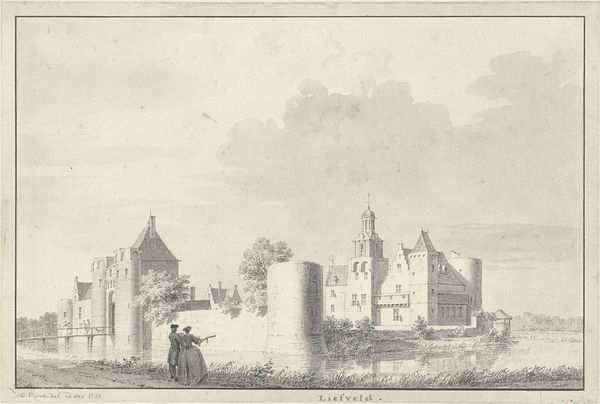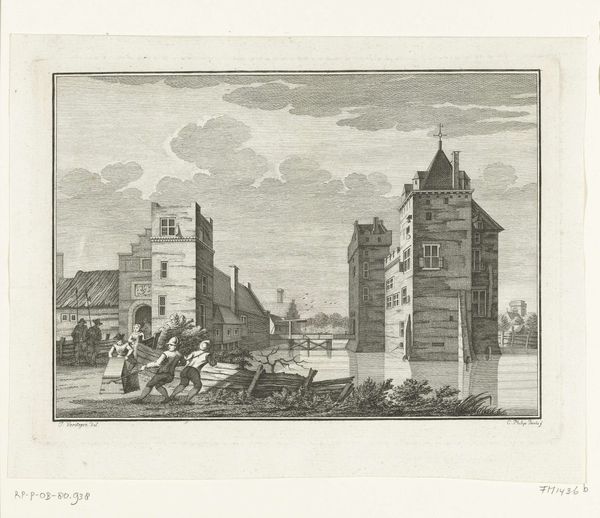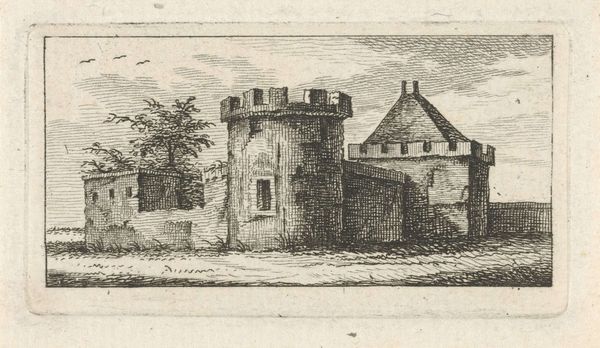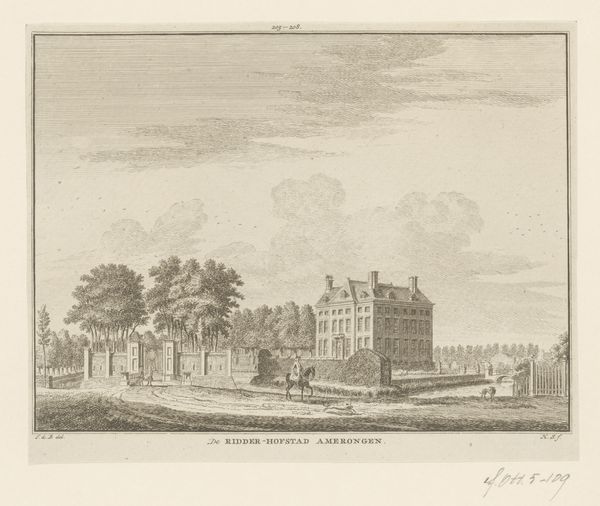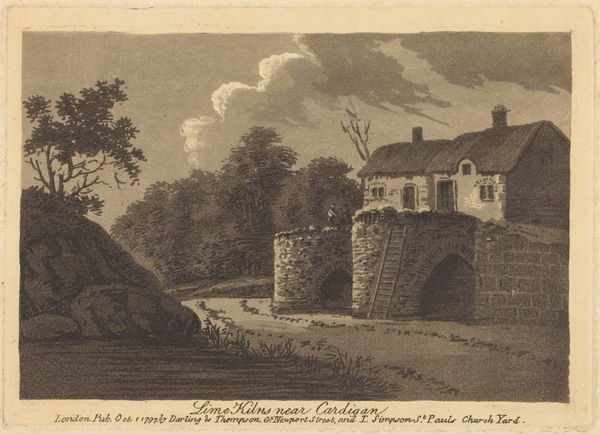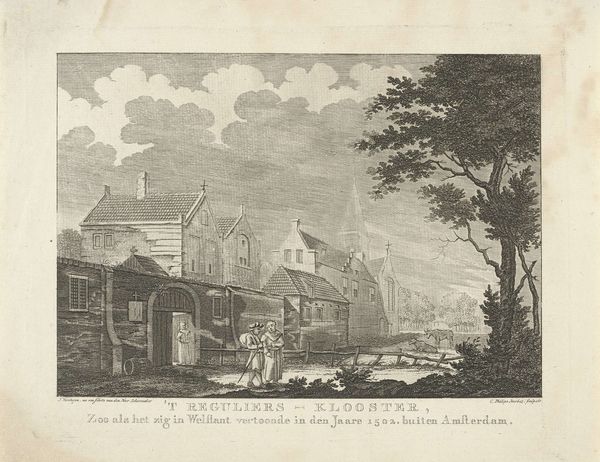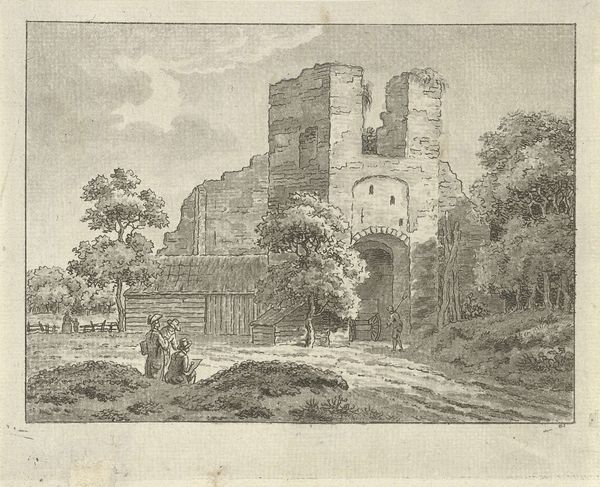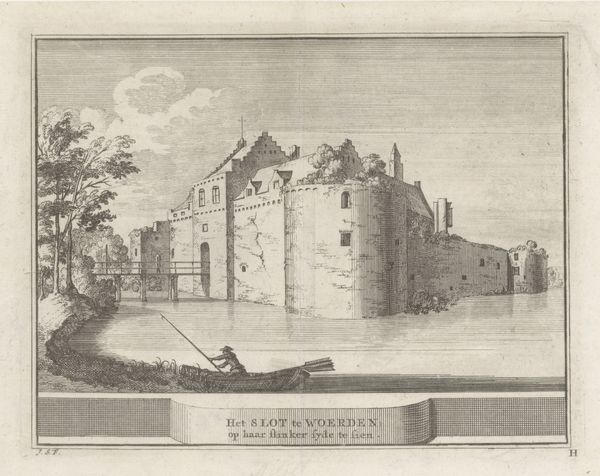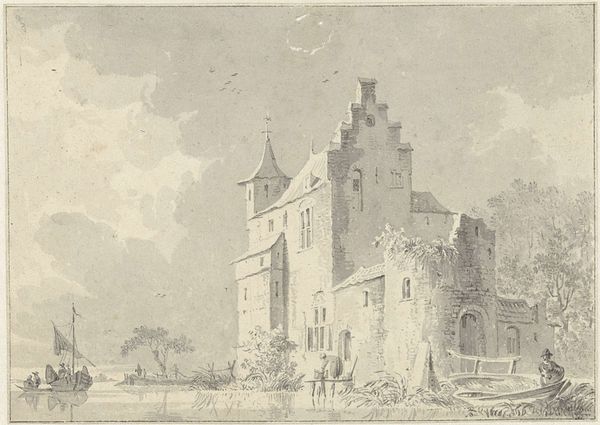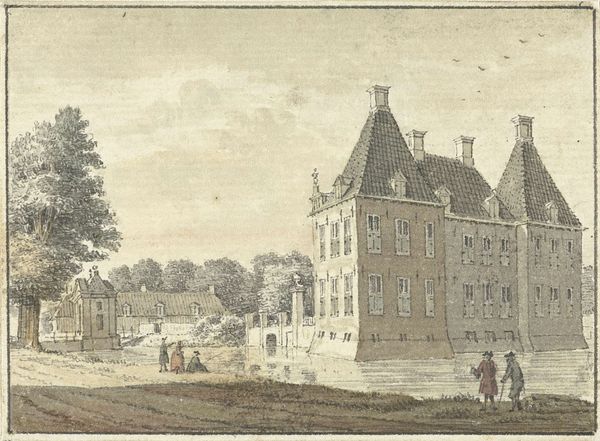
Dimensions: height 83 mm, width 111 mm
Copyright: Rijks Museum: Open Domain
Hendrik Spilman's "View of the Ruins of Teylingen Castle" presents a scene laden with symbolic weight. Dominating the landscape is the ruined castle, a stark reminder of temporal decay. Ruins, in the cultural context of the 18th century, evoked a sense of nostalgia and reflection on the transience of human achievements. The image is reminiscent of the "memento mori" tradition. It’s a symbolic representation of death, a genre that flourished during the Renaissance and Baroque periods. The ruin motif reappears across centuries; consider Piranesi’s dramatic etchings of Roman ruins or even earlier, medieval depictions of crumbling empires. These visuals tap into a collective memory, reminding us of the inevitable decline that awaits all structures, whether physical or societal. The psychological impact is profound. The ruin triggers a confrontation with mortality, urging viewers to ponder the fleeting nature of existence. This emotional engagement—the interplay between past grandeur and present decay—is a potent force. The ruin evolves from a mere structure into a symbol loaded with existential reflections.
Comments
No comments
Be the first to comment and join the conversation on the ultimate creative platform.

